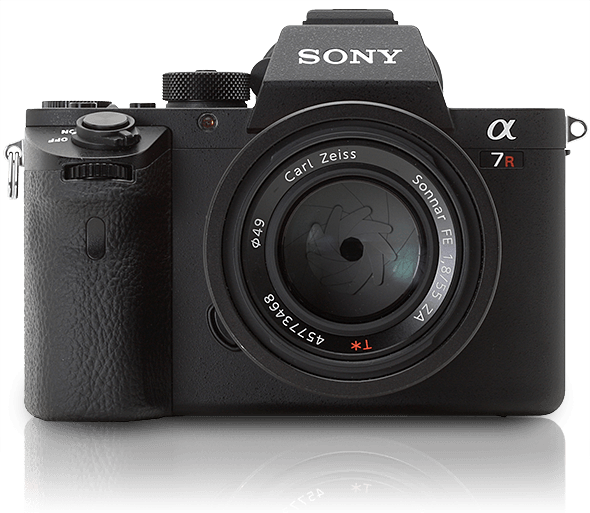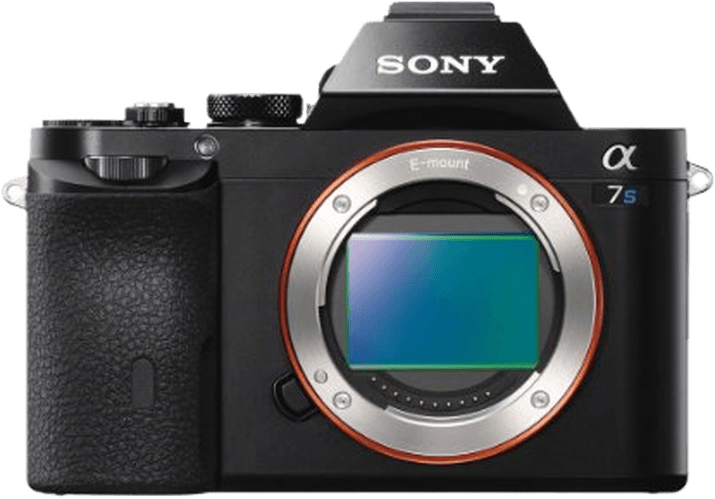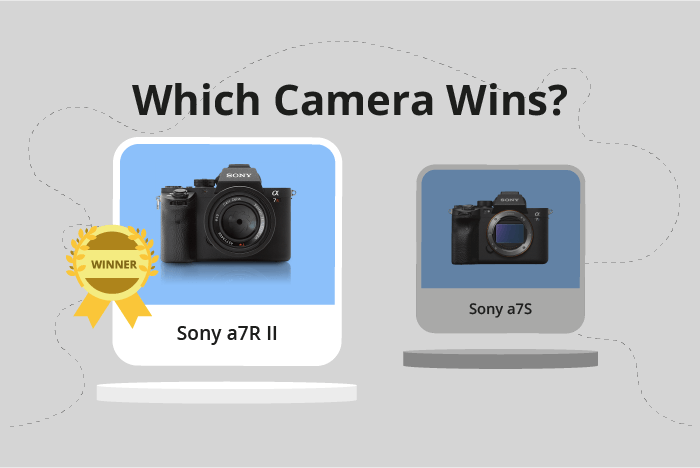Sony a7R II vs a7S Comparison
Sony a7R II

Sony a7S

The Sony a7R II outperforms the Sony a7S with a score of 70/100 compared to 55/100. Both cameras share similarities, such as being mirrorless and having similar dimensions. However, the a7R II excels with a higher launch price of $3198 and a slightly heavier weight of 625g, indicating a more robust build and advanced features. On the other hand, the a7S is lighter at 489g and more affordable with a launch price of $2499, making it a more accessible option for some users. Ultimately, the a7R II’s higher score reflects its superior performance and features, while the a7S offers a more budget-friendly choice.
Sony a7R II vs a7S Overview and Optics
The Sony a7R II emerges as the winner in the optics comparison, with a score of 81/100, while the Sony a7S trails behind at 60/100. This 21-point difference highlights the superiority of the a7R II in terms of optical performance. Both cameras share several specifications, including a shooting speed of 5, a CMOS sensor type, a Bionz X processor, a full-frame sensor size, and a Sony FE lens mount.
The a7R II outperforms the a7S in several aspects. With a higher megapixel count of 42.4, compared to the a7S’s 12.2, the a7R II captures significantly more detail and produces higher-resolution images. The a7R II also boasts a superior DXOMARK sensor score of 98, as opposed to the a7S’s score of 87, which reflects its better overall image quality. Additionally, the a7R II features image stabilization, providing an advantage when capturing images in low-light conditions or with longer focal lengths.
On the other hand, the a7S does not offer any clear advantages over the a7R II in terms of optics. Both cameras share the same shooting speed, sensor type, processor, sensor size, and lens mount. However, it is worth noting that the a7S’s lower megapixel count may be advantageous for those prioritizing low-light performance and video capabilities, as fewer megapixels can result in better low-light sensitivity and reduced noise.
Taking all these factors into account, the Sony a7R II stands out as the superior option for photographers seeking higher-resolution images, better image quality, and image stabilization. The Sony a7S, while lacking in optical advantages, may still be a suitable choice for those prioritizing low-light performance and video capabilities.
Sony a7R II vs a7S Video Performance
When comparing the video capabilities of the Sony a7R II and the Sony a7S, both cameras have a score of 56 out of 100. This means that there is no clear winner in terms of video performance. However, there are differences in the specifications that may appeal to different users.
Both cameras share some common specifications, such as the lack of built-in time-lapse functionality. This means that neither camera has an advantage in this aspect. However, the differences in their video capabilities lie mainly in the resolution and frame rate.
The Sony a7R II has a maximum video resolution of 4K with dimensions of 3840 x 2160, while the Sony a7S has a maximum video resolution of Full HD with dimensions of 1920 x 1080. This means that the a7R II can produce higher quality videos with more detail and clarity, making it a better choice for users who prioritize video quality.
On the other hand, the Sony a7S has a maximum video frame rate of 60fps, compared to the a7R II’s 30fps. A higher frame rate allows for smoother motion in videos and is better suited for capturing fast-moving subjects or recording slow-motion footage. This makes the a7S a more suitable option for users who require higher frame rates for their video projects.
Taking into consideration the differences in video resolution and frame rate, the Sony a7R II is better for those who prioritize video quality and detail, while the Sony a7S is better for users who need higher frame rates for smoother motion. Ultimately, the choice between these two cameras depends on the specific requirements and preferences of the user.
Sony a7R II vs a7S Features and Benefits
The Sony a7R II wins the features comparison with a score of 57/100, while the Sony a7S scores 54/100. Both cameras share several specifications, such as a 3-inch screen, no touchscreen, flip screen, no GPS, WIFI, and no Bluetooth.
The a7R II excels with its higher screen resolution of 1,228,800 dots, compared to the a7S’s 921,000 dots. This results in a sharper and clearer display, which is helpful for composing shots and reviewing images. This advantage contributes to the a7R II’s higher feature score.
On the other hand, the a7S has its own strengths, although they do not outweigh the a7R II’s advantages in this comparison. The a7S is known for its exceptional low-light performance and high ISO capabilities, which is not reflected in the feature scores. This makes it a popular choice among photographers who frequently shoot in challenging lighting conditions.
Taking these factors into account, the Sony a7R II is the better camera in terms of features, with its higher screen resolution being a significant advantage. However, the Sony a7S still holds value for those who prioritize low-light performance and high ISO capabilities. Both cameras offer a solid set of features, but the a7R II comes out on top in this comparison.
Sony a7R II vs a7S Storage and Battery
The Sony a7S emerges as the winner in the storage and battery category with a score of 21/100, while the Sony a7R II scores 16/100. Both cameras share some common specifications, such as having a single memory card slot and accepting SD/SDHC/SDXC and Memory Stick Duo/Pro Duo/Pro-HG Duo cards. Additionally, both cameras use the NP-FW50 battery type and do not offer USB charging.
The Sony a7S outperforms the a7R II in battery life, providing 380 shots compared to the a7R II’s 290 shots. This advantage makes the a7S more reliable for longer shooting sessions without needing to change or recharge the battery. On the other hand, the Sony a7R II does not have any significant advantages in storage and battery over the a7S.
Considering the longer battery life of the Sony a7S, it is the better choice for photographers who require extended shooting time without interruptions. The Sony a7R II, despite having a lower score in this category, still offers decent storage and battery performance for general use.
Sony a7R II vs a7S – Our Verdict
Are you still undecided about which camera is right for you? Have a look at these popular comparisons that feature the Sony a7R II or the Sony a7S:

